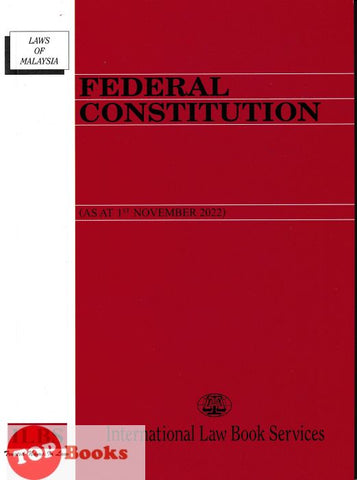Your cart is empty.

![[TOPBOOKS Law ILBS] Federal Constitution (As at 1st Nov 2022)](http://www.topbooks.my/cdn/shop/files/IMG_20240124_0010_grande.jpg?v=1706078050)
![[TOPBOOKS Law ILBS] Federal Constitution (As at 1st Nov 2022)](http://www.topbooks.my/cdn/shop/files/IMG_20240124_0010_compact.jpg?v=1706078050)
![[TOPBOOKS Law ILBS] Federal Constitution (As at 1st Nov 2022)](http://www.topbooks.my/cdn/shop/files/IMG_20240124_0011_compact.jpg?v=1706078050)
(as at 1st November 2022)
Unit : 1
Page : 224
Size : 18 X 25 (W X H CM)
The Federal Constitution is the supreme law of a federal state or country. It defines the powers of the government and the rights and freedoms of its citizens. The constitution also establishes the structure and functions of the government, including the legislative, executive, and judicial branches.
In general, a federal constitution is organized into several sections or articles. The specific content and organization of these sections may vary depending on the country. However, some common features of a federal constitution may include:
Preamble: This section outlines the goals and values of the constitution and serves as an introduction to the document.
Fundamental Rights and Freedoms: This section outlines the basic rights and freedoms of citizens, including freedom of speech, religion, and assembly. It may also include provisions for equality, non-discrimination, and the protection of human dignity.
Government Structure: This section outlines the structure and functions of the government, including the powers of the legislative, executive, and judicial branches. It may also include provisions for federalism, the relationship between the federal government and the states, and the distribution of powers.
Amendment Procedure: This section outlines the procedures for amending the constitution.
Miscellaneous Provisions: This section may include provisions for the protection of the environment, language rights, or other specific issues relevant to the country.
Overall, the Federal Constitution serves as the framework for the government and legal system of a federal state or country. It provides a set of fundamental principles and values that guide the actions of the government and protect the rights and freedoms of its citizens.